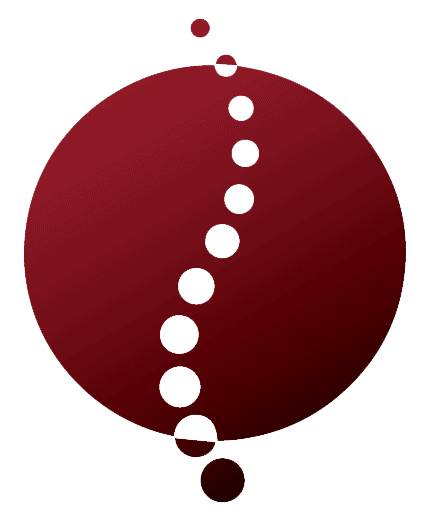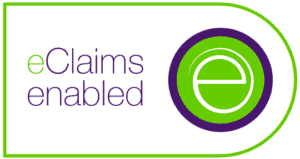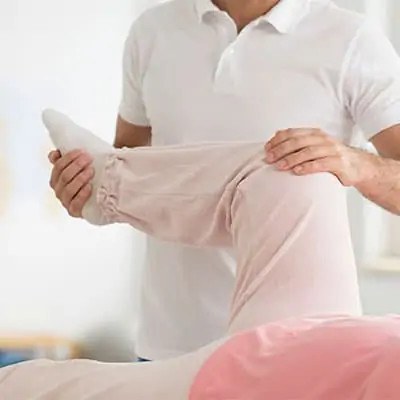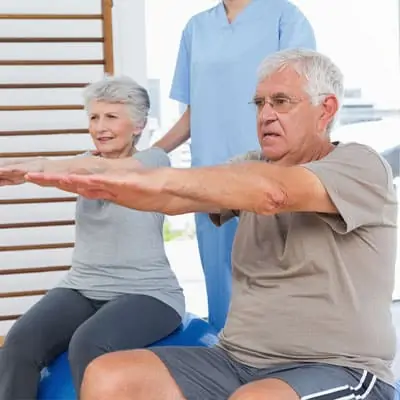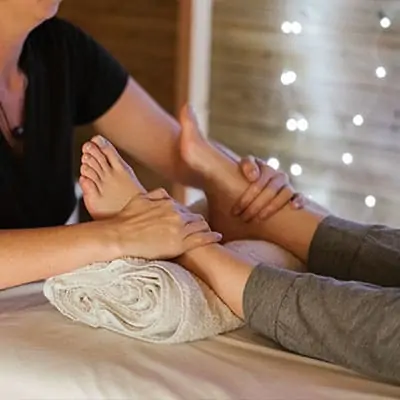Understanding Guillain-Barré Syndrome Rehabilitation
Overview of Guillain-Barré Syndrome
Guillain-Barré Syndrome (GBS) is a rare neurological disorder where the body’s immune system mistakenly attacks the peripheral nerves. This can lead to varying degrees of muscle weakness and paralysis. GBS typically begins with symptoms of tingling and weakness in the legs, which can spread to the upper body and arms. In severe cases, the paralysis can affect respiratory muscles, requiring urgent medical intervention.
Key Statistics
| Statistic | Number |
|---|---|
| Incidence Rate | 1 – 2 per 100,000 |
| Recovery Rate | ~70% achieve full recovery |
| Time to Peak Weakness | 2 – 4 weeks |
Importance of Rehabilitation in Guillain-Barré Syndrome
Rehabilitation is a crucial component of recovery for individuals with Guillain-Barré Syndrome. Since GBS can severely impact motor functions, a structured rehabilitation program is essential to help patients regain strength, coordination, and independence. Rehabilitation not only addresses physical impairments but also focuses on emotional and psychological support.
The multi-disciplinary approach to rehabilitation involves neurologists, physiotherapists, occupational therapists, and speech therapists. This team works cohesively to design a personalized recovery plan.
Relevant Fields of Rehabilitation
- Neurological Physiotherapy
- Balance and Gait Training
- Functional Electrical Stimulation (FES)
Our rehabilitation program utilizes evidence-based practices, ensuring that each patient receives the care they need to progress effectively. The goal is to promote neuroplasticity and help patients rebuild their lives, one step at a time.
By understanding the essence of Guillain-Barré Syndrome and the vital role of rehabilitation, we can better support those on their journey to recovery. For more detailed insights into related neurological rehabilitation practices, explore our articles on stroke rehabilitation and parkinsons disease rehabilitation.
Building a Rehabilitation Team
A successful rehabilitation journey for people with Guillain-Barré Syndrome (GBS) requires a comprehensive and collaborative approach. Building an effective rehabilitation team is essential for ensuring that patients receive the best possible care and support throughout their recovery process.
Neurologists and Physiotherapists
Neurologists play a critical role in the management and rehabilitation of GBS. As specialists in the nervous system, they diagnose the condition, oversee medical treatments, and monitor the progression of the disease. Their expertise ensures that patients receive appropriate medical interventions and adjustments as needed.
Physiotherapists are equally vital in the rehabilitation team. They design and implement individualized exercise programs aimed at improving mobility, strength, and endurance. By utilizing techniques such as balance and gait training and functional electrical stimulation (FES), physiotherapists help patients regain their physical capabilities.
| Specialists | Role in Rehabilitation |
|---|---|
| Neurologists | Diagnose and manage GBS, oversee medical treatments, monitor disease progression |
| Physiotherapists | Design individualized exercise programs, improve mobility, strength, and endurance |
Occupational Therapists and Speech Therapists
Occupational therapists focus on helping patients regain their ability to perform daily activities. They assess the patient’s functional abilities and develop strategies to enhance their independence. This may include recommending adaptive equipment or modifying the patient’s environment to facilitate easier movement. For those facing challenges with coordination or dexterity, occupational therapy can be a game-changer.
Speech therapists, on the other hand, address issues related to communication and swallowing, which can be affected by GBS. These specialists work on improving speech clarity, language skills, and safe swallowing techniques. Their interventions are crucial for ensuring that patients can effectively communicate and receive adequate nutrition.
| Specialists | Role in Rehabilitation |
|---|---|
| Occupational Therapists | Assess functional abilities, develop strategies for independence, recommend adaptive equipment |
| Speech Therapists | Improve speech clarity, enhance language skills, address swallowing difficulties |
By assembling a diverse team of specialists, we can provide comprehensive care for those undergoing Guillain-Barré syndrome rehabilitation. The collaboration between neurologists, physiotherapists, occupational therapists, and speech therapists creates a well-rounded approach that addresses the multifaceted needs of GBS patients. For more information on similar rehabilitation approaches, explore our articles on stroke rehabilitation and multiple sclerosis physiotherapy.
Approaches to Rehabilitation
In Guillain-Barré Syndrome Rehabilitation, a multifaceted approach is critical for patient recovery. Our focus includes physical therapy, occupational therapy, and speech therapy, each addressing specific aspects of rehabilitation.
Physical Therapy
Physical therapy plays a key role in minimizing the effects of Guillain-Barré Syndrome. It aims to restore mobility, strength, and function through various exercises and techniques tailored to the patient’s condition.
Key Elements of Physical Therapy:
- Range-of-Motion Exercises: Stretching exercises to prevent muscle stiffness and maintain joint flexibility.
- Strengthening Exercises: Targeted exercises aimed at improving weakened muscle groups.
- Balance and Gait Training: Activities to enhance stability and walking ability. For more insights, visit our balance and gait training page.
| Therapy Type | Focus | Expected Outcome |
|---|---|---|
| Range-of-Motion Exercises | Flexibility | Prevents joint stiffness |
| Strengthening Exercises | Muscle Strength | Enhances muscle power |
| Balance and Gait Training | Stability | Improves walking ability |
For additional resources, considering exploring our article on spinal cord injury rehabilitation, which shares some similarities in physiotherapy approaches.
Occupational Therapy
Occupational therapy addresses the practical aspects of daily living that are impacted by Guillain-Barré Syndrome, helping individuals regain independence.
Key Elements of Occupational Therapy:
- Self-Care Skills: Techniques for performing activities such as dressing and eating.
- Adaptive Equipment Training: Instruction on using tools that make daily tasks easier.
- Coping Strategies: Methods to handle physical limitations and maintain a quality of life.
| Therapy Type | Focus | Expected Outcome |
|---|---|---|
| Self-Care Skills | Daily Activities | Increases independence |
| Adaptive Equipment Training | Tool Use | Facilitates daily tasks |
| Coping Strategies | Emotional Well-being | Improves quality of life |
For individuals requiring extensive occupational therapy, multiple sclerosis physiotherapy offers a broader perspective of similar interventions.
Speech Therapy
Speech therapy is essential for patients experiencing difficulties with communication and swallowing due to Guillain-Barré Syndrome. This therapy aids in improving speech clarity and safety in eating and drinking.
Key Elements of Speech Therapy:
- Speech Exercises: Techniques to enhance articulation and vocal strength.
- Swallowing Techniques: Strategies to ensure safe and effective swallowing.
- Communication Aids: Use of devices to support communication for severely affected individuals.
| Therapy Type | Focus | Expected Outcome |
|---|---|---|
| Speech Exercises | Articulation | Clearer Speech |
| Swallowing Techniques | Safe Eating | Reduces choking risks |
| Communication Aids | Communication | Enhances interaction |
For more detailed information, you can read about parkinsons disease rehabilitation, which often involves similar speech therapy practices.
By integrating physical, occupational, and speech therapies, we create a comprehensive rehabilitation plan that addresses the multifaceted needs of individuals with Guillain-Barré Syndrome. For a deeper understanding of various rehabilitation strategies, including those for other conditions, consider visiting our sections on functional electrical stimulation (FES) and neuroplasticity training.
Setting Realistic Goals
Setting achievable goals is a crucial part of Guillain-Barré syndrome rehabilitation. Establishing clear objectives helps keep us on track and ensures that progress is monitored effectively.
Short-Term Goals
Short-term goals serve as immediate targets that can be achieved within a shorter timeframe. These goals are essential in maintaining motivation and providing a sense of accomplishment. Common short-term goals include improving muscle strength, increasing range of motion, and restoring basic functional abilities for daily tasks.
| Goal | Description | Timeframe |
|---|---|---|
| Improve Muscle Strength | Exercises focused on boosting muscle power in affected areas | 2-4 weeks |
| Increase Range of Motion | Stretching routines to enhance joint flexibility | 1-2 weeks |
| Restore Basic Functions | Activities to regain abilities like sitting, standing, and walking with assistance | 2-6 weeks |
These short-term objectives are foundational. Achieving them sets us up for tackling more extensive targets outlined in long-term goals.
Long-Term Goals
Long-term goals are designed to sustain improvements and foster independence over an extended period. These goals usually encompass returning to work, resuming social activities, and achieving a high quality of life. Examples include walking independently, regaining fine motor skills, and participating in community life.
| Goal | Description | Timeframe |
|---|---|---|
| Walk Independently | Training to move without assistance or walking aids | 6-12 months |
| Regain Fine Motor Skills | Activities to refine hand coordination for tasks like writing and typing | 3-6 months |
| Engage in Social Activities | Building endurance and confidence to participate in social and recreational events | 6-12 months |
These long-term goals are integral to a comprehensive rehabilitation plan. They provide a roadmap for ongoing improvement and adaptation.
Maintaining focus on realistic, attainable goals—both short-term and long-term—plays a pivotal role in the effectiveness of Guillain-Barré syndrome rehabilitation. By breaking down the recovery process into manageable segments, we can ensure that each step is progressive and meaningful.
For insights related to other neurological conditions, refer to our articles on stroke rehabilitation and motor neuron disease therapy.
Strategies for Successful Rehabilitation
Achieving success in Guillain-Barré Syndrome rehabilitation requires a strategic approach. We will explore three crucial strategies: consistency and patience, monitoring progress, and emotional support.
Consistency and Patience
Consistency and patience are fundamental to the rehabilitation of Guillain-Barré Syndrome. It takes time for the body to heal and regain strength, making regular and persistent therapy sessions essential. Our efforts in this area should focus on creating a routine that the patient can stick to, ensuring that therapies like physical therapy and occupational therapy are part of their daily or weekly schedule.
Consistency helps the nervous system rewire itself, taking advantage of concepts like neuroplasticity training. We need to encourage patients to stay committed to their therapy plans, even when progress seems slow.
Monitoring Progress
Tracking progress is vital for making informed adjustments to the rehabilitation plan. By regularly evaluating the patient’s development, we can identify which therapies are effective and which need modification. Monitoring tools might include:
- Regular physical assessments
- Functional tests
- Patient self-reports
Below is a sample table to log and monitor progress over a month.
| Week | Mobility Improvement | Muscle Strength (% Increase) | Fatigue Levels (1-10) |
|---|---|---|---|
| 1 | Standing for 5 min | 5% | 8 |
| 2 | Standing for 10 min | 7% | 7 |
| 3 | Walking 5 steps | 10% | 6 |
| 4 | Walking 10 steps | 15% | 5 |
Regularly reviewing this data in conjunction with healthcare professionals can ensure optimal progression and timely intervention when needed. For further information on tracking progress in different conditions, you can refer to stroke rehabilitation and multiple sclerosis physiotherapy.
Emotional Support
The emotional well-being of patients is as important as their physical recovery. Emotional support helps patients maintain a positive outlook, which can improve their engagement in therapy and overall quality of life. Encouraging a support network of family, friends, and counseling services is essential.
We can integrate community support groups and individual counseling sessions into the rehabilitation program. These groups can provide a space for patients to share their experiences and draw motivation from others facing similar challenges.
Addressing emotional needs helps to build resilience and perseverance. For more comprehensive strategies on emotional support in rehabilitation, consult our articles on spinal cord injury rehabilitation and functional movement disorders physiotherapy.
By incorporating consistency and patience, monitoring progress, and providing emotional support, we can create a robust framework for successful Guillain-Barré Syndrome rehabilitation.
Empowering Recovery
Empowering recovery in Guillain-Barré Syndrome (GBS) rehabilitation involves building confidence, maintaining progress, and seeking support and resources. These components are essential for a successful rehabilitation journey with GBS.
Building Confidence
Confidence is critical in GBS rehabilitation. It’s important for us to believe in our potential for recovery. Setting achievable goals enables a sense of accomplishment and motivation. Encouraging positive self-talk and celebrating small victories can significantly boost self-esteem.
Patients and caregivers can consider the following strategies:
- Positive reinforcement: Acknowledge every small gain.
- Peer support: Engage with others who have experienced GBS.
- Education: Understand the progress and phases of GBS to manage expectations.
| Strategy | Description |
|---|---|
| Positive reinforcement | Celebrating small gains to build self-confidence |
| Peer support | Engaging with individuals who have gone through similar experiences |
| Education | Understanding the phases and progress of GBS |
Maintaining Progress
Maintaining progress in rehabilitation is vital. Consistency in following therapy routines and regular assessment of improvements ensures sustained advancement. Regularly consulting with the rehabilitation team aids in identifying any tweaks needed in the rehab plan.
Important aspects for maintaining progress include:
- Routine: Stick to a structured therapy schedule.
- Monitoring: Track improvements and setbacks.
- Adaptation: Adjust therapy techniques as required.
| Activity | Focus |
|---|---|
| Routine | Following a structured therapy schedule |
| Monitoring | Tracking improvements and setbacks regularly |
| Adaptation | Adjusting therapy techniques as progress is made |
Seeking Support and Resources
Support networks and resources play a significant role in empowering recovery. Access to medical professionals, support groups, and educational materials can provide the necessary assistance and encouragement.
Resources and support include:
- Professional help: Frequent consultations with neurologists and physiotherapists.
- Support groups: Joining GBS-specific groups for emotional and practical assistance.
- Educational materials: Reading materials and workshops to understand GBS better.
| Resource | Purpose |
|---|---|
| Professional help | Consulting neurologists and physiotherapists regularly |
| Support groups | Emotional and practical support from peers |
| Educational materials | Gaining knowledge through reading materials and workshops |
Engagement with a combination of strategies, maintaining a consistent therapy plan, and harnessing available resources can significantly positively impact GBS rehabilitation. For more insights, consider exploring related topics such as neuromuscular rehabilitation, functional movement disorders physiotherapy, and motor neuron disease therapy.
